Volume 14 Number 1
©The Author(s) 2012
Abstract
This article describes a project related to babies undertaken by preschoolers in a university-affiliated child care center in the Midwest. Following a description of the class, the author discusses the three phases of the project. Photographs taken during the project are included throughout the article. The article concludes with the author’s reflections.
Background to the Project
The Baby Project took place from June to September 2011 in a classroom at the Children’s Campus, an early childhood center at St. Ambrose University. St. Ambrose is an independent, diocesan Catholic university located in Davenport, Iowa, USA. The Children’s Campus serves children ages 2 months to 5 years old. (See more information about the Children’s Campus at http://www.sau.edu/ChildrensCampus.html.)
Children’s Campus teachers begin exposing children to inquiry-based learning in the infant room; consequently, many of the children in the class involved in the Baby Project had prior experience with project work. Children’s Campus staff members involved in the Baby Project were the author (head teacher Andromahi Harrison) and assistant teacher Kara Ellenberg. Three student workers were also present at different times during the project.
In our classroom (known as the Leapfrog room), we use the Creative Curriculum. We also maintain a “word wall” of words related to a project. Project work is part of the daily schedule in our classroom, although we do not set aside a special time of the day for it. Typically, an activity related to the project topic is set up on a table as children enter the room each morning. We may spend 30 minutes on the topic or the entire day. Investigations are child-led with support from the teachers.
We had observed that children in the class that investigated babies tended to have very long projects. If children are engaged in an investigation, then we, the teachers, support them in keeping the project going as long as they have an interest in the topic.
The children who participated in the Baby Project ranged in age from 3 to 5 years and attended full days, five days per week. Because the investigation began during the summer session, some children left and others entered the program during the course of the project. A total of 16 children (9 girls, 7 boys) were involved.
Children in this particular group were enthusiastic about writing and reading. Several of them were beginning to read. Others knew how to use Google proficiently; they could sound out the words that they wanted to use as search terms and type them in or get adult assistance with the typing.
As the Baby Project began, I talked with parents and invited them to express any concerns that they might have with the sensitivity of the topic. When any of them had a question, I walked them through what I was planning to do. The main concern that parents expressed regarded terminology. They wanted to be sure that I planned to use child-friendly vocabulary. I spoke individually with parents who were concerned about how I would explain how babies were born. In general, families said that they were comfortable with the way I teach, that they trusted me, and that they had no concerns about the topic.
Phase 1
Preliminary Conversations about Babies
The project began because of the intense interest that children were showing in babies. Several of the children had siblings and cousins in the infant-toddler room at our center, and the mother of one of the children (Andrea) was pregnant. As Andrea’s mother’s belly grew bigger, the children often expressed curiosity about the baby. Often when Andrea’s mother came to the classroom, the children would feel her “stomach,” measure it, and ask questions. She is a teacher, too, and seemed to be comfortable with this kind of interaction.
The classroom conversations about babies reached a peak one morning when children were able to feel the baby’s arm. They could tell that the baby was kicking, and they were eager to share their observations with teaching staff, their parents, and children in other classrooms.
When Andrea’s sister Rose was born, Andrea brought pictures to show the class. Some of the children wondered how Rose could be measured now that she was outside of her mother’s “stomach,” so their mother photographed Rose on a scale and sent the photo to school with Andrea to share with classmates.
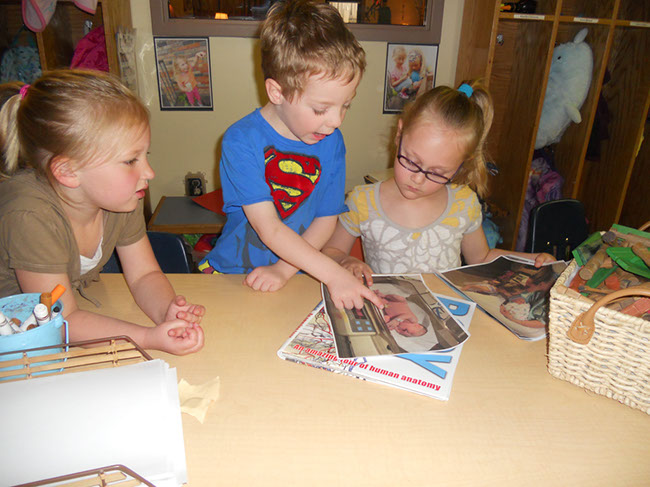
Figure 1. Andrea brought a photograph of her baby sister lying on a scale to show classmates how babies are weighed and measured.
Memory Drawings
As we noticed the children’s ongoing interest in babies, we gave them opportunities to express and represent their current understanding of babies.
Tamsin (5 years, 9 months) drew two pictures in her book about babies. The first was a picture of a mother and child. She drew and labeled each picture and included a drawing of a pacifier, commenting, “Babies need pacifiers if they are sad.” She explained that her second drawing was of a baby learning to walk to her mom (Figure 2).
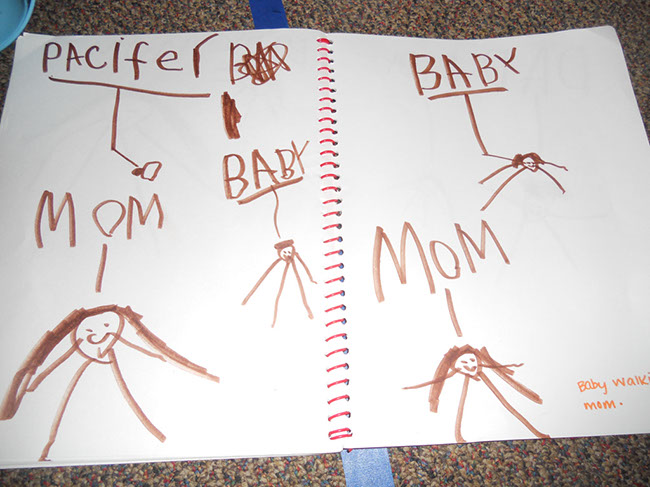
Figure 2. Tamsin drew and labeled two pictures representing mothers and babies, and a pacifier.
Jackson’s memory drawing depicted a baby and a “belly.” He made connections to himself and his own siblings, explaining, “Cassie, Noelle, and me lived in mom. Then we came out” (Figure 3).
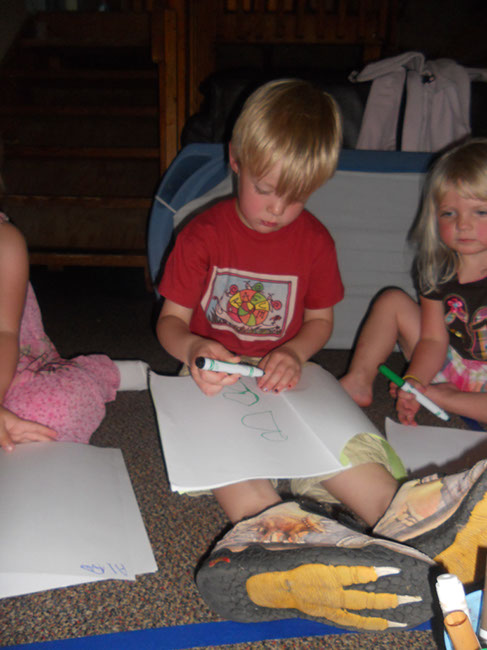
Figure 3. Jackson made a memory drawing of a baby and a pregnant mother’s “belly.”
Listing Current Knowledge
In our class, teachers and children typically create a topic web together, webbing outward from a symbol for the topic we are investigating. For example, during a project on trees, a picture of a tree would be at the center of the web. In this case, we took a different approach. Someone had donated colored cards to the class, and the children were enthusiastic about using them. So instead of making a web, we used the cards to create a list to represent their current knowledge. Teachers helped the children list their current knowledge about the topic, writing each child’s contribution on a card with the child’s initial. To add visual interest, the teachers outlined each of the lists in the shape of a baby bottle (Figure 4).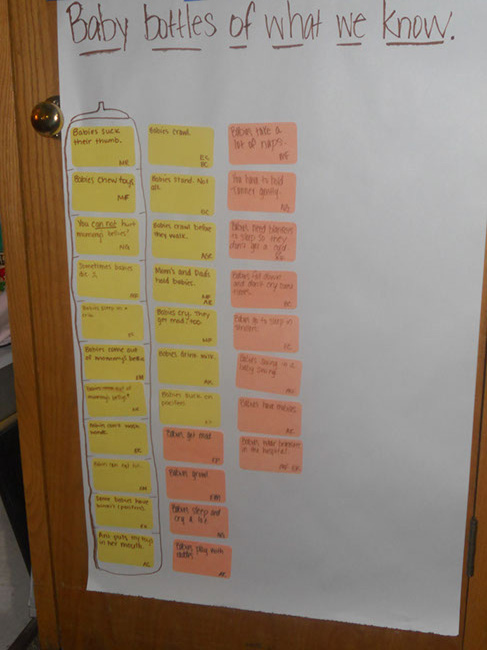
Figure 4. With the teachers’ help, the children listed their current knowledge about the topic.
The children were ready to ask questions soon after the lists of their current knowledge were created. Already familiar with the initial events of project work, they moved through Phase 1 quickly. They understood that the investigation of babies would be based on their questions. They posed most of their questions at circle time. We encouraged them to revisit the list of questions frequently. For example, I would say, “These are the questions we have so far. Does anyone have any other questions to add?”
We continued to add questions throughout the project. Several of the additional questions came from Tamsin, whose mother became pregnant as the project was beginning. We used the cards again to create lists of the children’s questions (Figure 5). When a guest expert visited, the children went to the list to retrieve the cards for specific questions.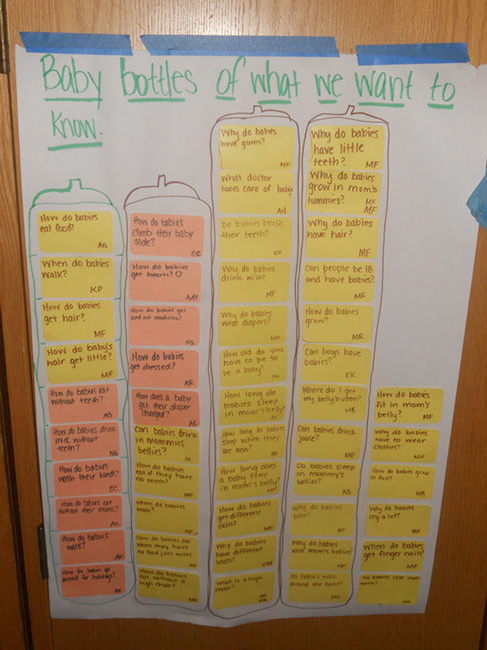
Figure 5. The children had many questions about babies.
At that point, the children asked the following questions:
- Do babies lose their teeth?
- Can babies drink in their mommies' bellies?
- How long does a baby stay in the mom’s belly?
- What doctor takes care of babies?
- Why do babies have different seats?
- How do babies get different skin?
- How do babies eat when they have no food, just milk?
- Why do babies kick their mom’s bellies?
- How long do babies sleep when they are new?
- How do babies get hair?
- How does the baby’s hair get little?
- Why do babies bite?
- How do babies get hearts?
- How do babies grow?
- Where do I get my bellybutton?
- Why do babies have little teeth?
- How do babies fit in their mom’s belly?
- Why are bottles crooked?
- Why do babies have hair?
- How do babies grow so fast?
- Can people be 18 and have babies?
- Why do babies cry a lot?
- How do babies eat without a high chair?
- Why do babies grow in their mom’s tummies?
- How do babies get dressed?
- How do babies get dressed for holidays?
- How do babies eat without their moms?
- Why do babies wear diapers?
- How long do babies sleep in their mom’s belly?
- How do babies climb their baby slide?
- Why do babies have gums?
- How does a baby get their diaper changed?
- Do babies sleep in mommies' bellies?
- How do babies get and eat medicine?
- Do babies walk around the house?
- When do babies walk?
- How do babies walk?
- Can babies drink juice?
- Can boys have babies?
- How do babies wash their hands?
- How do babies eat food?
- How do babies eat if they have no teeth?
- Do babies spit up?
- Why do babies have to wear clothes?
As Phase 1 was completed, we were unsure in what direction the project would actually go or exactly what the children would learn as a result of their investigation. I feel that if I decide in advance exactly what they are going to learn then I might miss some “teachable moment” and the children might not gain as much as they might otherwise. For any project, the teachers create an anticipatory web that we align with the Creative Curriculum objectives. The anticipatory web includes where we think the children might “go” with the topic. The teachers review that web and may bring several ideas on it to the children, recognizing that they might or might not show interest. I also periodically check the anticipatory web to refresh my memory about potential objectives that might be met through the project.
Phase 2
In our classroom, the teachers typically bring objects related to the topic into the classroom for the children to explore as part of their fieldwork during Phase 2. The children typically sketch the object, which prompts the addition of questions to the web or list.
My co-teacher and I would observe the children manipulate the object, and based on what they seemed to be wondering, we would encourage them to study that piece further—for example, how to open the buckle on an infant seat. Many times an older child who knew the answer would teach a younger child, or they would search for the answer on the computer or in a reference book, with adult help if needed.
Investigating Car Seats
In mid-June, the children began investigating an infant seat that had been brought to the classroom. Hannah (4 years, 11 months) showed Bianca (3 years, 6 months) how to put a baby in the car seat and fasten the seat belt (Figure 6). Declan (5 years) drew the car seat (Figure 7) and dictated the names of the parts of the car seat to me so that I could label his drawing for him. He labeled the strap, the place for the baby’s feet, the handle, and the hood (Figure 8). He then wrote the word “baby” on the word wall and requested that his drawing of the car seat also be added to the word wall.
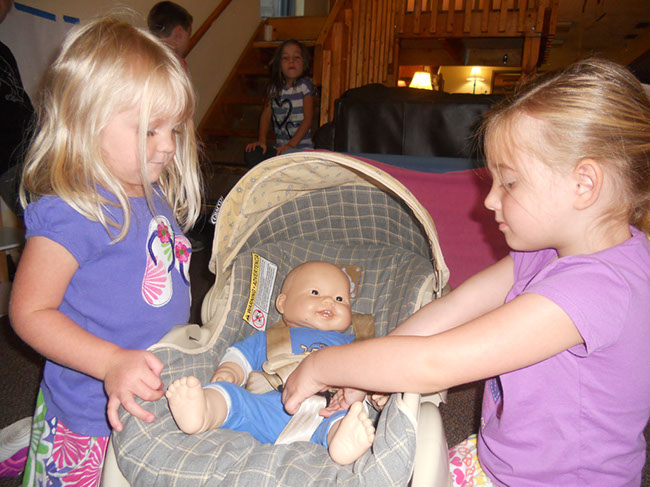
Figure 6. Hannah (4 years, 11 months) and Bianca (3 years, 6 months) put a doll in the car seat.

Figure 7. Declan sketched the car seat.
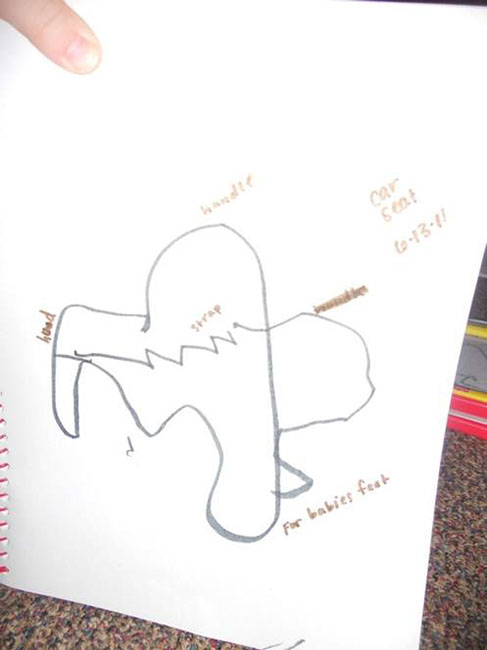
Figure 8. After Declan drew the car seat, a teacher helped him label the parts.
Several children wanted to know the names of the parts of the infant seat. The teachers found a diagram online and put it up on the Smart Board, which is located in the gross motor room next door to our classroom. The children copied the words onto note cards, then brought the cards back to the classroom so they could use them in the writing area. For example, Lola (3 years, 9 months) copied the words “Adjustor strap” to use in labeling the car seat (Figure 9). Bianca (3 years, 6 months) used scribbles and shapes for the word “strap.” Children also made up a game that involved matching the word cards to parts of the actual car seat.
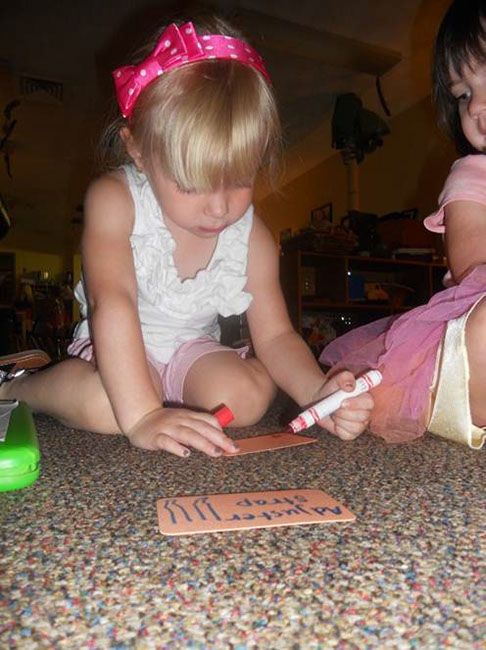
Figure 9. Lola copied words to use in labeling parts of the car seat.
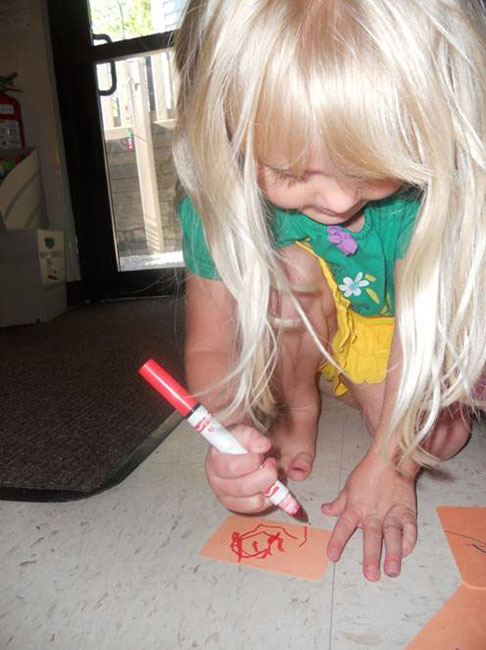
Figure 10. Bianca documented the word “strap.”
Following the experience with the Smart Board infant seat diagram, Scarlett (4 years, 10 months) asked me to add words that the children had learned from the diagram to the “Baby Word Wall” (Figure 11). She then copied the words to a large sheet of paper taped to the wall (Figure 12). Diza (4 years) joined her and copied the last two words.
Figure 11. Words the children learned from the infant seat diagram were added to the class word wall (on left).
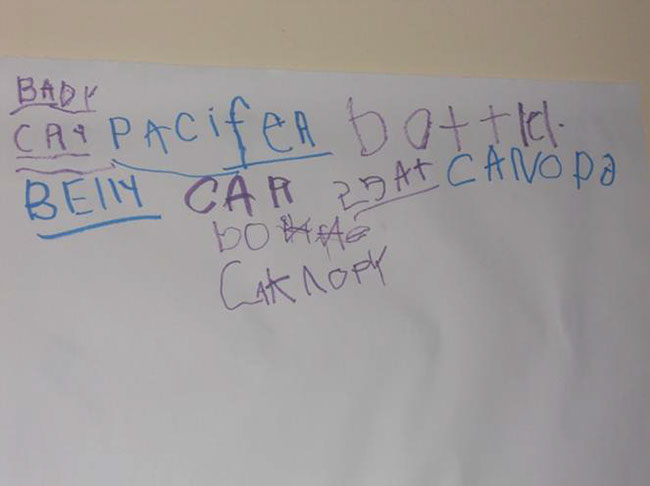
Figure 12. Children copied several words from the word wall to a piece of chart paper.
Kara and I often plan and create situations that invite the children to measure and compare objects related to a project. After the class had investigated the infant seat, we brought in a car seat made for older children. I suggested that the children measure and compare the two car seats to determine which one was intended for babies and which for older children. They did so by measuring both car seats, trying to fit their bodies into each one, and discussing their findings.
When the children had measured both seats, several of them asked me to record the measurements on chart paper. Scarlett soon took over the recording process from me. (She had been spontaneously documenting her own ideas and data without teacher guidance for several months, frequently saying, “I need to write this down.” If she needed help with a word, she would look it up on the word wall or in a book, or she would ask a teacher.) Taylor (5 years, 2 months) assisted Scarlett in documenting car seat measurements. He took several measurements, including the width of the car seat, and told Scarlett what to write. Other children became involved in measuring. Ryan (4 years, 9 months) counted the inches on the ruler as he measured the infant seat (Figure 13). When Nette (4 years, 10 months) and Ryan were using a tape measure, she reminded him, “Don’t forget that you need to start at zero to measure” (Figure 14).
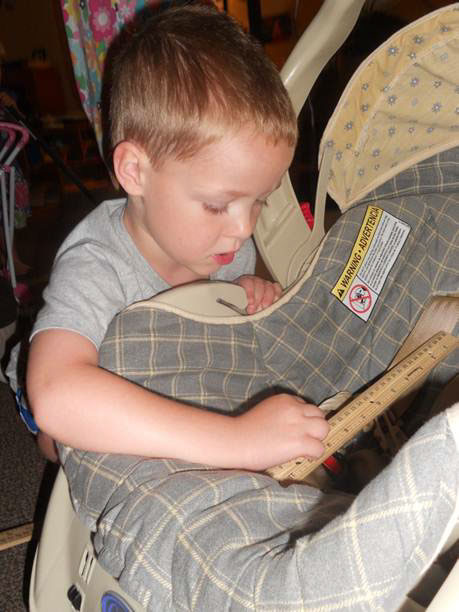
Figure 13. Ryan measured the infant seat with a ruler.

Figure 14. Nette reminded Ryan to “start at zero to measure.”
Representing New Knowledge
Kara and I gave the children many opportunities to represent their current knowledge in multiple ways. For example, we provided materials so that they could represent their observations with clay, model magic, and dramatic play in addition to sketching. They also had access to a collection of found materials in a box that we call our Treasure Chest. The children know that they can use anything in the Treasure Chest to create representations. (I modeled using the Treasure Chest at the beginning of the year; the children who were involved with the Baby Project were familiar with it.)
In late June, a few weeks into the project, a group of girls spontaneously decided to create books about babies. Girls in this group were older 4-year-olds or young 5-year-olds who would all be attending kindergarten in the fall. They planned to share their books with the other children at circle time. Making the books included stapling the pages of a book (Figure 15), making illustrations (Figure 16), and writing (Figure 17).

Figure 15. Making the books included stapling the pages together.
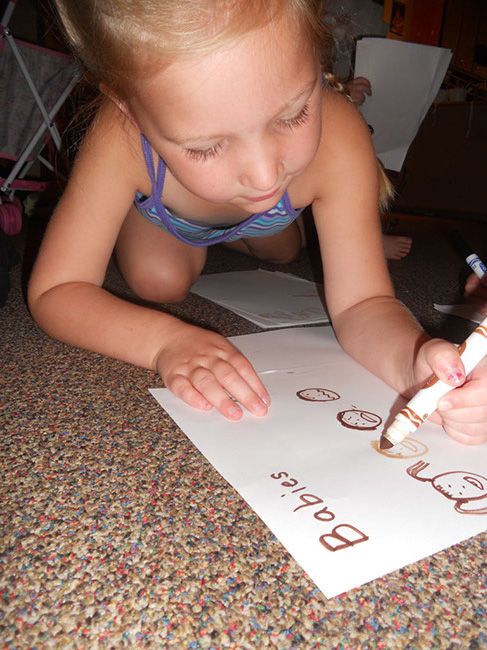
Figure 16. Illustrations were important parts of the books about babies.
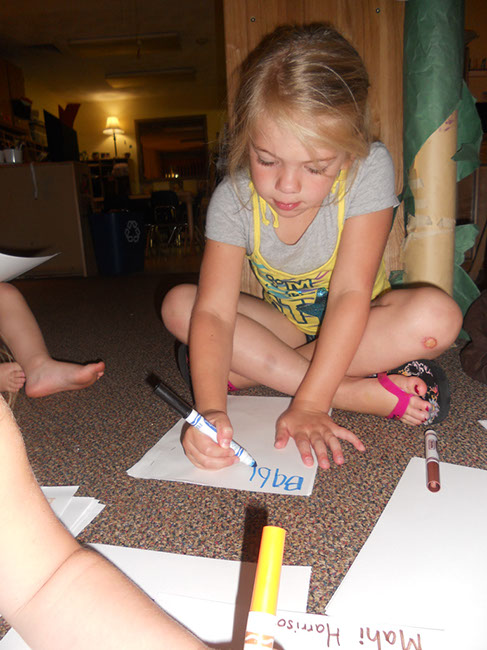
Figure 17. Creating the books allowed children to do their own writing.
One day in late June, Tamsin (5 years, 9 months), Nette (4 years, 10 months), and Cameron (3 years, 8 months) worked together to make representations of a variety of baby accessories. Tamsin created a teether using modeling compound and other materials (Figure 18). Scarlett (Figure 19) and Cameron (Figure 20) both made rattles.
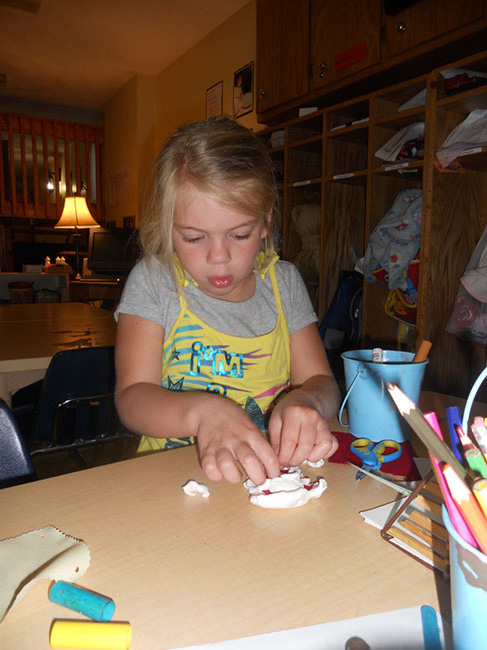
Figure 18. Tamsin created a teether.
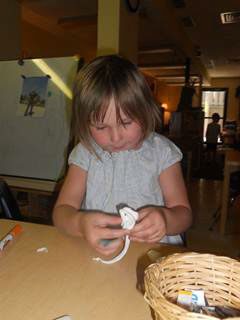
Figure 19. Scarlett created a rattle.
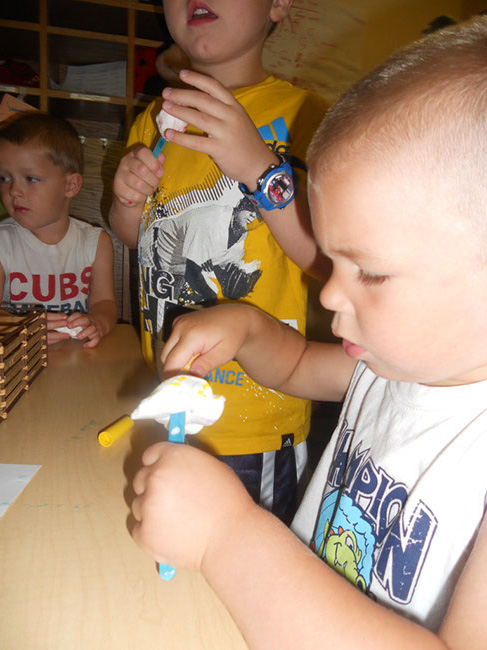
Figure 20. Cameron created a rattle.
The baby accessories that the children created were put on display in the classroom. The accessories included high chairs, mobiles, a baby swing, rattles, toys, and blankets.
Dramatic Play during Phase 2
Children had asked questions about how and what babies eat. Bianca (3 years, 7 months) read the steps for preparing baby formula from the label on the container with me, and she acted out the steps in the dramatic play area. The first step was to wash hands, so Bianca washed her hands in the pretend sink (Figure 21). The next step in the instructions was to add water to the bottle, so Bianca pretended to fill the bottle at the play sink. The next step was to add the powdered formula to the bottle; I helped her “measure” the correct number of scoops (Figure 22). Bianca then closed and shook the bottle and fed it to her “baby.” Tamsin also pretended to use formula that Bianca mixed for a “feeding” (Figure 23).
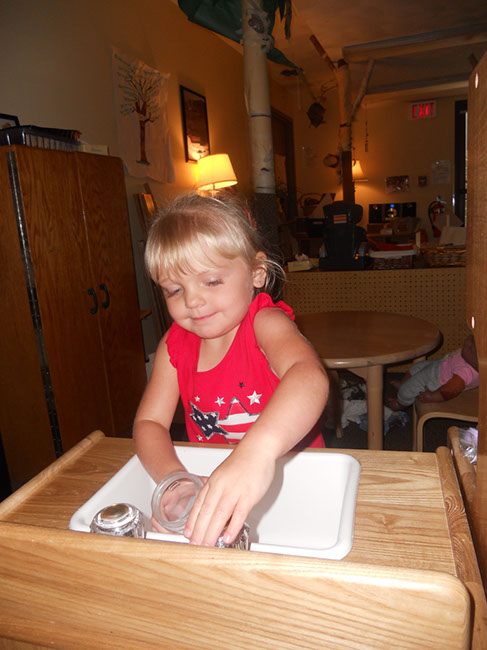
Figure 21. Bianca follows the first step in the instructions on the formula container and washes her hands.
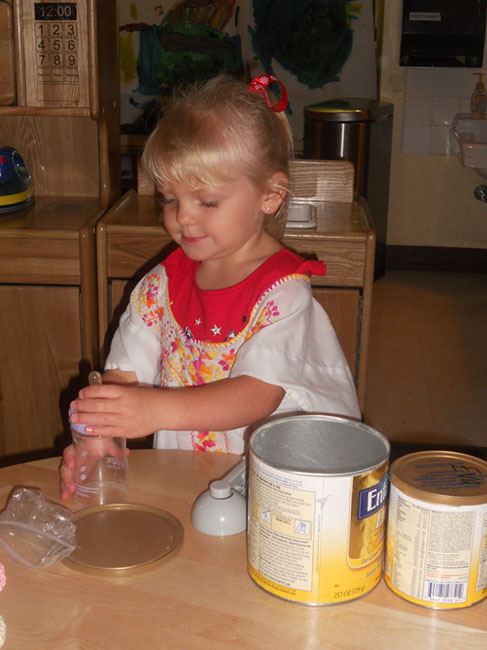
Figure 22. Bianca follows the remaining steps to prepare the formula.

Figure 23. Tamsin feeds the baby doll formula that Bianca mixed.
One day after the project had been going for several weeks, one child mentioned that when his baby is sick, he takes it to the doctor’s office. This sparked doll play that represented visiting the doctor’s office with a baby.
Gareth (4 years, 2 months) used a toy blood pressure cuff to check his “baby’s” blood pressure (Figure 24). Gavin used a toy stethoscope to hear the heartbeat (Figure 25). Lola (3 years, 9 months) pretended to administer a shot (Figure 26).
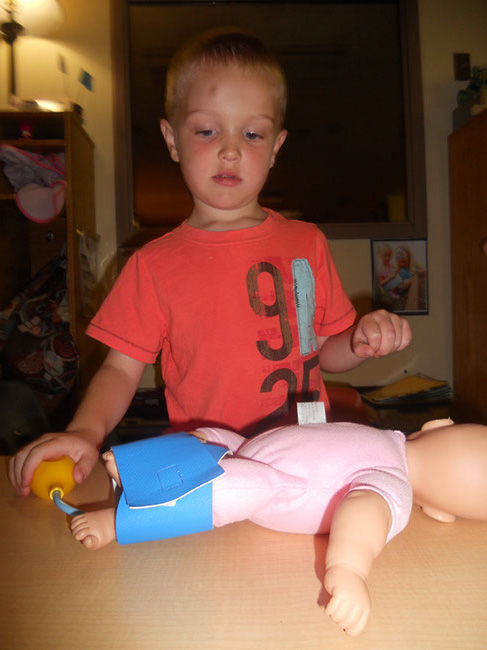
Figure 24. Gareth takes his “baby’s” blood pressure.
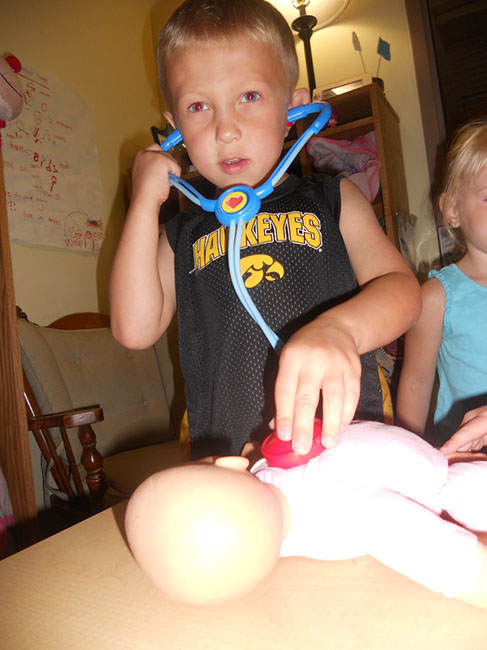
Figure 25. Gavin listens for a heartbeat.
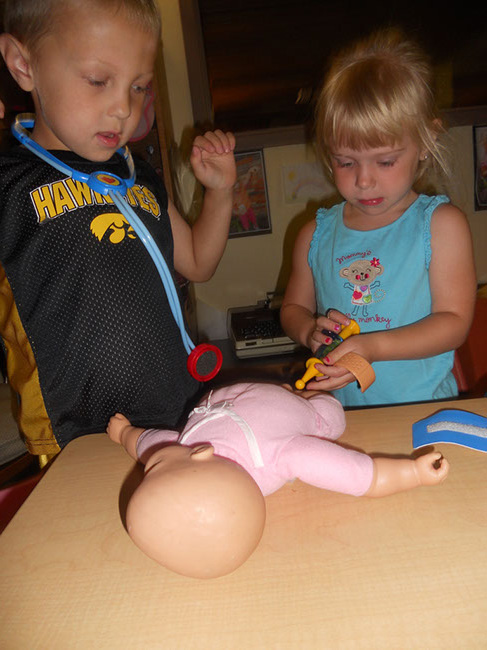
Figure 26. Lola administers a shot.
Investigating a Bouncer Seat
One day in early July, I brought in a baby bouncer but did not immediately tell the class what it was. Children immediately began to investigate it—pushing the buttons, pulling out the bars, and placing a baby doll in it. Hannah (5 years) made a sketch of the bouncer (Figure 27). She and Declan (5 years, 1 month) predicted that it was called a rocking chair, and they sounded out and wrote the words “rocking chair.” Gareth (4 years, 2 months) noticed a bar under the bouncer that was part of its structure. He investigated the bar, then during lunch, he shared what he had realized about its function: “I got it! I know what the bar does! It makes it rock or not rock!”
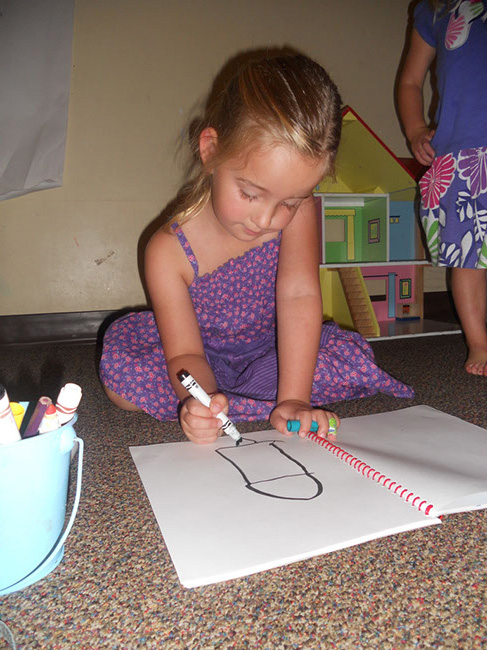
Figure 27. Hannah sketched the bouncer.
A Visit from a Baby
In early July, Andrea’s sister, Rose, who was 6 weeks old, came to visit the classroom with her mother, Polly. The children were excited to see Rose face-to-face for the first time and to say hello to her (Figure 28). They asked Polly questions about Rose and observed the baby as she moved, cooed, and cried (Figure 29). The children continued to ask questions as the teachers each took a turn holding Rose (Figure 30).
At that time, the children’s questions included the following:
- How do you dress babies?
- How do babies eat?
- Why do babies cry?
- Can boys have babies?
- Why do babies wear diapers?
- Can Rose crawl? Walk?
- Do you have a diaper bag, and what’s in it?
- Why do you have to burp babies?
- Do babies eat a lot?
- Do babies spit up?
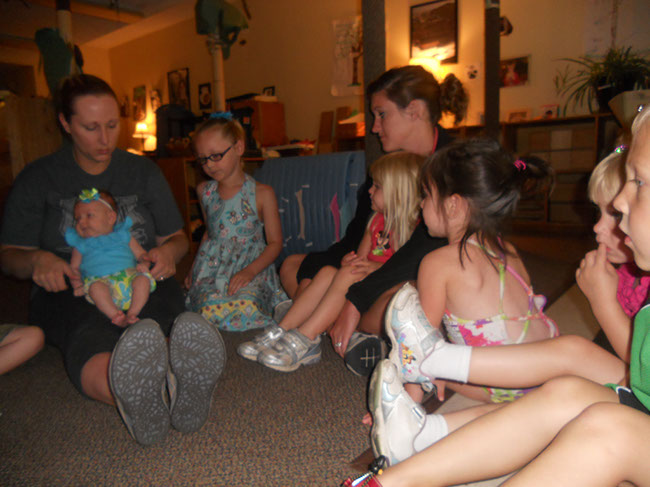
Figure 28. Andrea’s mother brought baby Rose to school so children could observe her and ask questions about her.

Figure 29. Baby Rose moved, cooed, and cried during her visit to the classroom.

Figure 30. The children continued to observe Rose’s behavior while the teachers took turns holding her.
The children also had many questions for Polly about Rose’s car seat, base, and stroller. To help them find the answers they needed, Polly pulled her car up alongside the school and took each piece of equipment out so the children could see it. She demonstrated how to put the car seat in the car and how she placed the mirror to keep Rose safe. She also showed the children some of the features of Rose’s stroller (Figure 31).
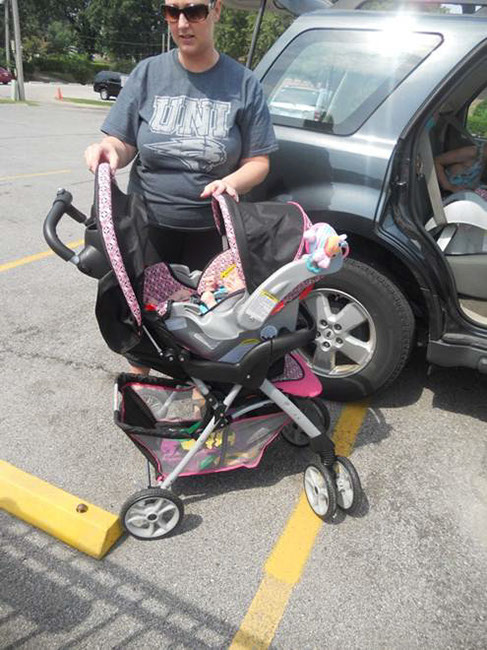
Figure 31. Polly explained the features of baby Rose’s stroller.
A Follow-up Discussion
As I listened to the children talk with one another during lunch the next day, I could tell that they were still thinking about the information shared during the visit from Polly and Rose. Kami (3 years, 4 months) told me, “My baby Anni has a stroller. On her stroller is a canopy! Just like our baby seat! The bouncer, too.” Gareth (4 years, 2 months) said, “All infant seats need a base. The man in the video said you can turn the baby seat at one year old. We should write that down somewhere.” Tamsin (5 years, 10 months) told a friend, “Babies grow a lot outside the body. I think they grow a lot in a mom’s belly too, or they wouldn’t be healthy to come out. That is why you have to have your baby at the hospital like Polly said. They need to be healthy, and if they are not, the doctor has to check the baby.” I felt it was important to document what the children were saying for parents because their comments reflected the children’s growing knowledge.
Investigating Fetal Development and Birth
Knowing that pregnancy and birth can be sensitive topics, I had spoken with parents at the beginning of the project and asked them to share any concerns with me.
In response to questions that some of the children asked, we provided books and other resources that showed fetal development. After viewing some of these resources, Mina (4 years, 1 month) created three sketches that represented the first, third, and ninth months of pregnancy. She described the first picture as the “embryo,” the second as “The baby’s bones are getting stronger. It’s growing legs!” and the third as, “Nine months. Baby is ready to come out. The baby is kicking and hitting mom’s belly, because it does not have much room.”
Other children showed interest in information about aspects of fetal development and birth at other points during the project, as well. For example, one day Bianca (3 years, 7 months) told me, “I want to show you something.” She then used a piece of Model Magic that she rolled into a ball, flattened out, and stretched, while she explained her understanding of pregnancy to me. She explained that part of what she created was “the umbilical cord. That gives the baby food. When the baby eats, the mommy eats!”
Also, about 2 months into the project, Raissa (4 years, 3 months) used a poster to explain to classmates several things that she had learned about pregnancy and fetal health, including “Newborns need to be born full term” and “Babies born too early will need to go in the NICU.”
No child ever asked me or Kara where babies come from. One day at circle time, some of the children did ask that question of their classmate Andrea, whose baby sister Rose had visited the class. She said, “My mommy and daddy wanted a baby, and when they went to the doctor’s, he told my mommy she had a baby in her belly, and they were really excited.” The children seemed comfortable and satisfied with that explanation.
Exploration of Bottles
Some of the children explored features of baby bottles at the water table. Tamsin bent the nipple of the bottle to see if she could get water to come out of it. She then took off the nipple and poured water directly into it to see if water would flow through it (Figures 32 & 33). Scarlett used a measuring cup to fill the bottle. She then tapped the nipple of the bottle on her arm, telling her peers, “This is how you check to see if the milk is too hot” (Figures 34 & 35).
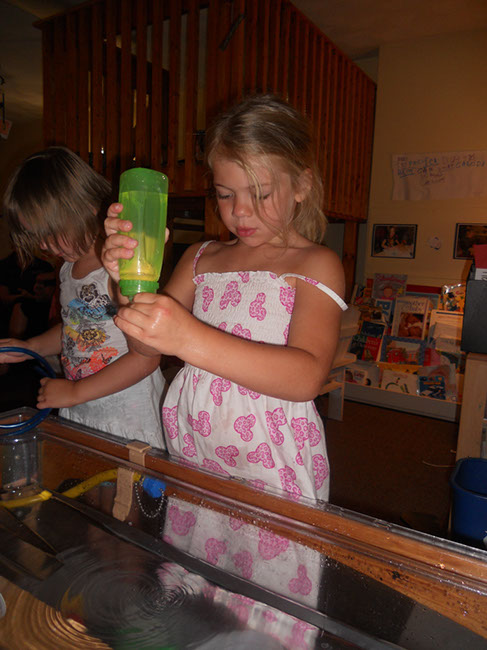
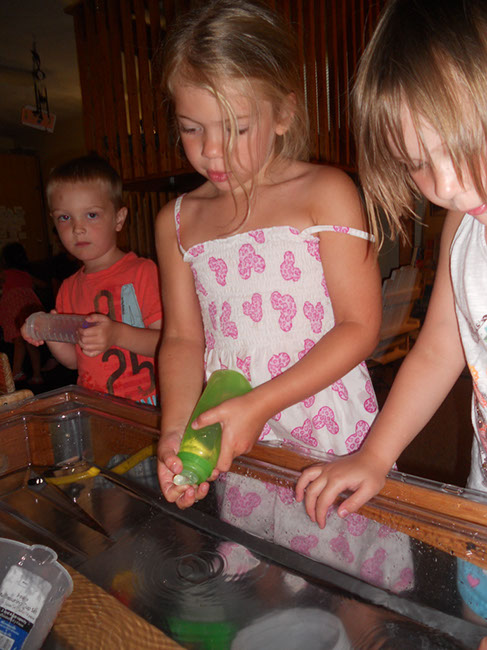
Figures 32 & 33. Tamsin investigated how the nipple of the bottle worked.

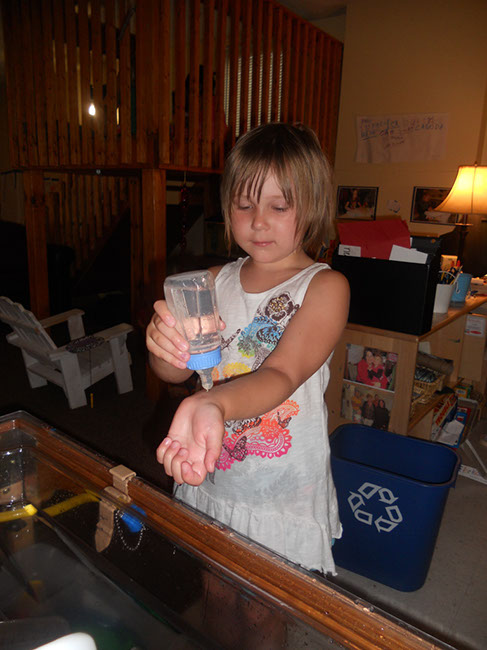
Figures 34 & 35. Scarlett filled a bottle and demonstrated how to “see if the milk is too hot.”
Investigating the Stroller
A new piece of baby equipment was introduced—a stroller. Children made sketches through direct observation of the stroller and by revisiting photo documentation of the visit that Andrea’s mother and sister had made to the class (Figures 36 & 37). One child made two sketches of the same stroller; her time-2 drawing shows more detail than her time-1 sketch does (Figures 38 & 39). I documented the children’s comments as they discussed strollers. Jackson (4 years, 3 months) told Cameron (3 years, 19 months), “I saw a stroller with two babies in it. Do you know what it is called?” Cameron responded, “Is that a double stroller?” Jackson said, “Yup! A double stroller.” Cameron then told Jackson, “Did you know a stroller has two wheels and handles? It keeps the baby safe.”
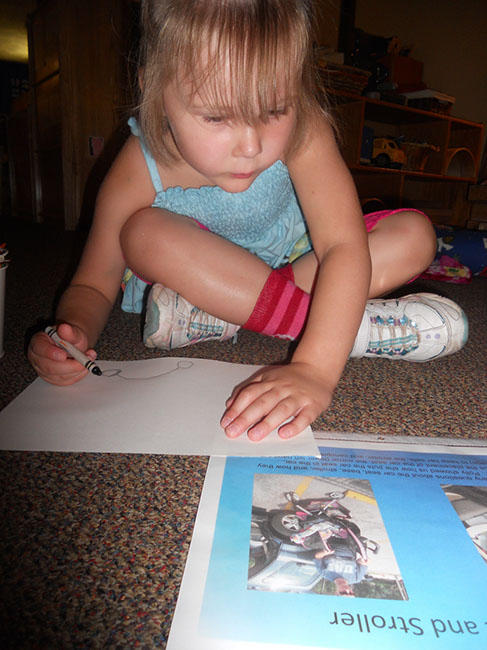
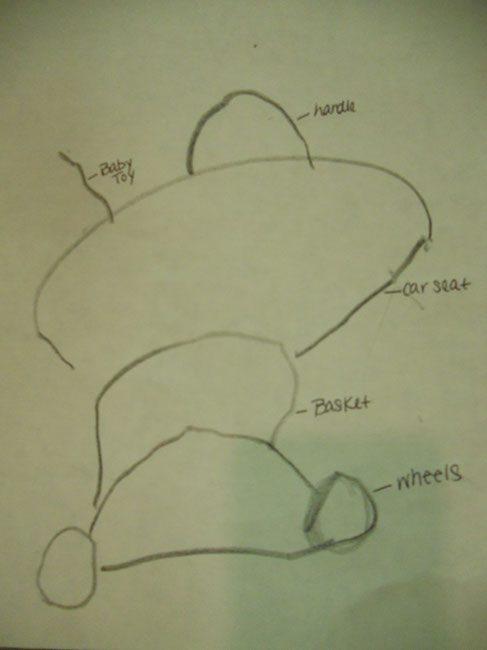
Figures 36 & 37. Some children sketched from photos of a stroller.
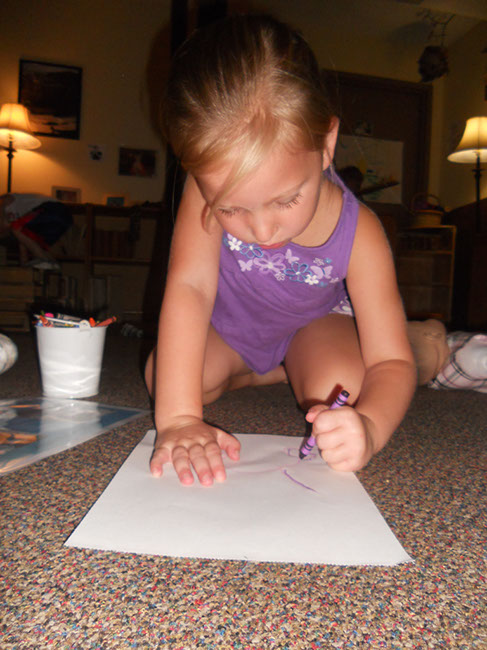

Figures 38 & 39. This child’s time-2 drawing (right) shows increasing attention to detail compared to her time-1 sketch.
Learning to Swaddle Infants
During a discussion about baby care, several of the children noted that their younger siblings had been swaddled. In response to their interest, Kara and I found a YouTube video that showed how to swaddle an infant. The children studied it and became proficient at swaddling the classroom dolls (Figures 40-44).
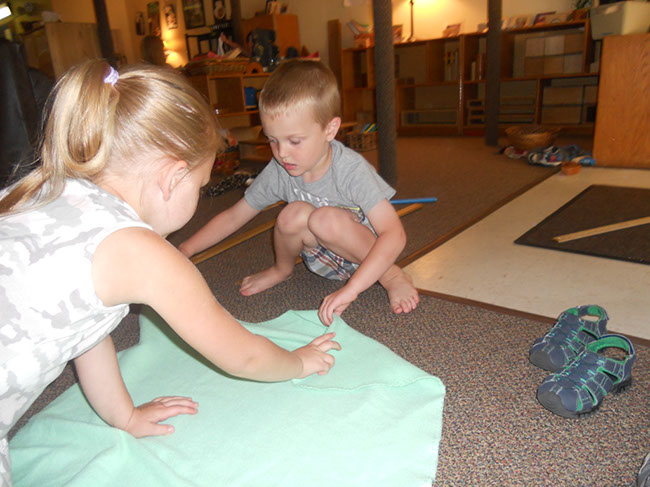
Figure 40. Step 1: Preparing the blanket.
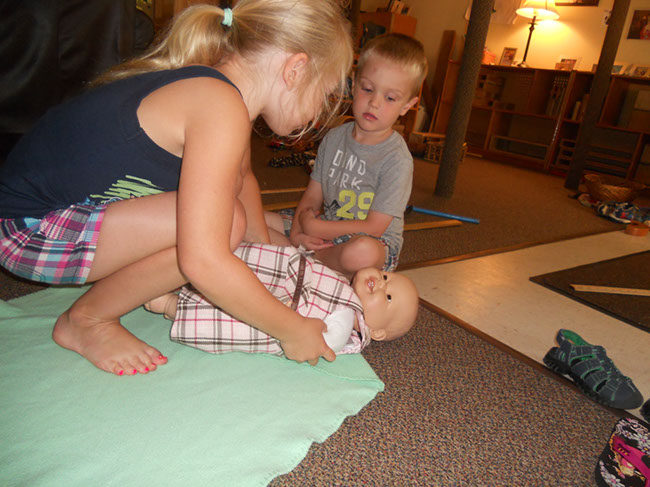
Figure 41. Step 2: Placing the baby on the blanket.
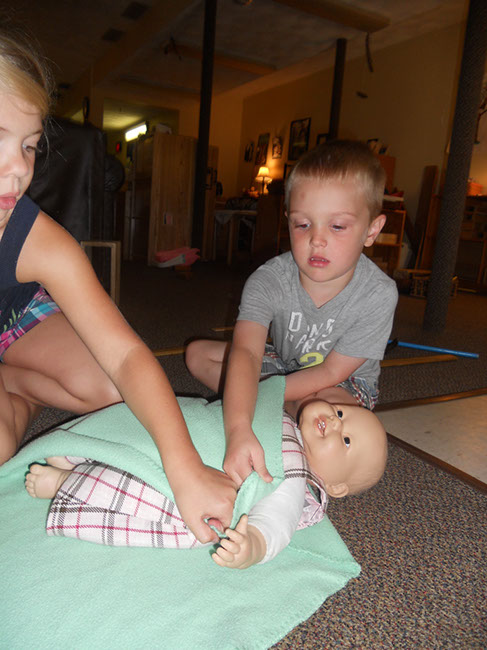
Figure 42. Step 3: Folding one corner across.

Figure 43. Step 4: Folding the bottom up.

Figure 44. Step 5: Folding the other corner across and around the baby.
Sharing New Ideas with Classmates
One day about 2 months into the project, after a morning of investigation, dramatic play, and sketching, some children asked if we could share some of their new ideas at group time. The following are some of the ideas they expressed:
- “Babies are actually stuck to their mommy when they are born with the umbilical cord.” Gareth (4 years, 3 months)
- “Babies crawl under people’s legs sometimes.” Cameron (3 years, 10 months)
- “I learned the belly pushes (contracts) to make the baby come out of the body. Babies can’t eat big chunks of food either.” Raissa (4 years, 3 months)
- “My mom was sick when Katie was in her belly. Mom had to go to the doctor so they could get her baby out of her belly. They want to crawl everywhere. She cries in her bed sometimes. She eats baby food, too.” Zoe (2 years, 11 months)
- “At the beginning, babies can only eat baby food.” Grace (4 years, 9 months)
- “They eat baby crackers sometimes.” Bianca (3 years, 8 months)
- “Annabell can eat, crawl, walk, eat crackers. That is because she’s a toddler.” Jackson (4 years, 4 months)
- “I think some babies do not like baby food. Some bigger babies eat pizza. It has to be in small bites.” Lola (3 years, 10 months)
Investigating Traveling with Babies
Kara and I provided opportunities for the children to explore tools and equipment that parents use to make travel with babies more convenient, including slings for carrying babies and a travel playpen.
Gareth was interested in the different kinds of slings for carrying babies. He wrapped a scarf around his middle and said, “Here is one kind” (Figure 45), and then he put one over his shoulder and explained, “Here is another kind.”
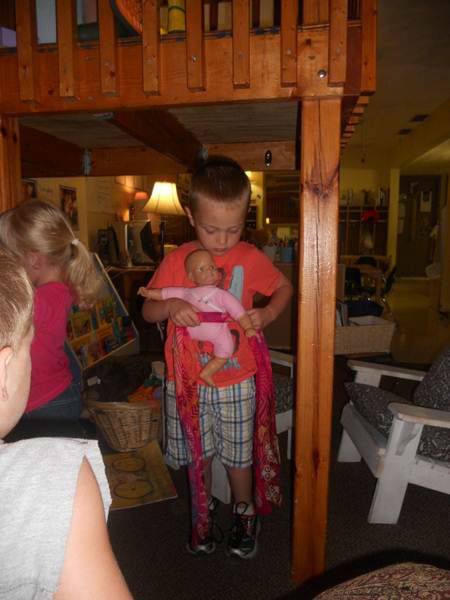
Figure 45. Gareth demonstrated different kinds of slings.
In August, we received a boxed Pack ‘n Play (a brand of travel playpen or play yard). Before unpacking it, I asked the children to sketch what they thought a Pack ‘n Play would look like. I then asked them to help me unpack it and set it up, but I did not tell them how to do it. I wanted them to figure this out for themselves. Raissa (4 years, 4 months) and Cameron (3 years, 11 months) advised that it had to be pulled open first (Figure 46). Gareth (4 years, 4 months) and Zoe (3 years) looked underneath it to make sure that the bars and legs were not crooked (Figure 47). Zoe explained, “If they are [crooked], a baby will get hurt. We don’t want our baby to get hurt.”

Figure 46. Raissa and Cameron tried opening the new playpen.
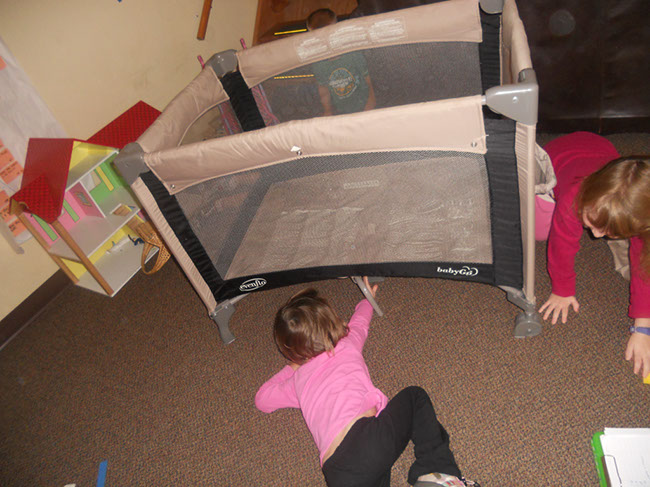
Figure 47. Some children checked to see if the bars and legs were straight.
After setting it up, the children wanted to add the bassinet piece that was designed to fit inside. They tried to put it in themselves, but they were unable to make the top piece fit. Gavin (4 years, 11 months) commented, “I think this part (the bassinet part) needs to be a rectangle like the shape of the Pack ‘n Play.” They finally decided to consult Lynn, who is the teacher in the 2-year-old room and Cameron’s mother, because she had donated it to our room (Figure 48). With a little assistance, they were able to finish the assembly process (Figures 49-52).
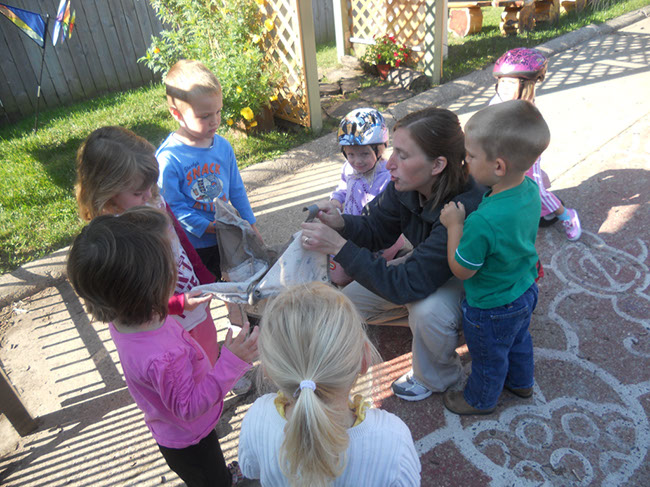
Figure 48. Several children consulted with Lynn to learn how to attach the bassinet.
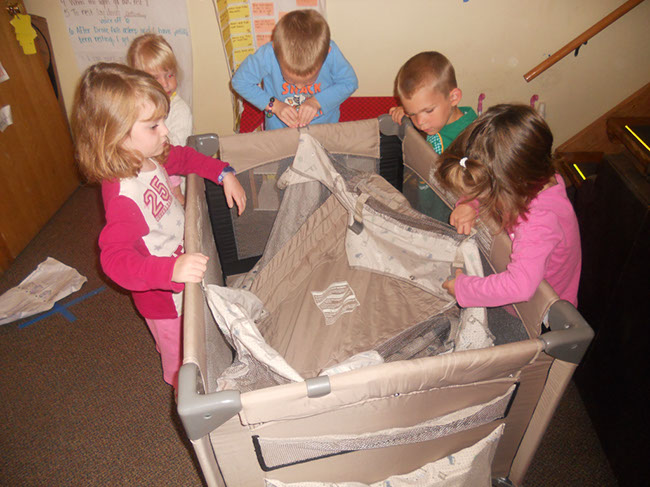
Figure 49. Children worked together to install the bassinet.

Figure 50. Installing the bassinet required attention to detail.
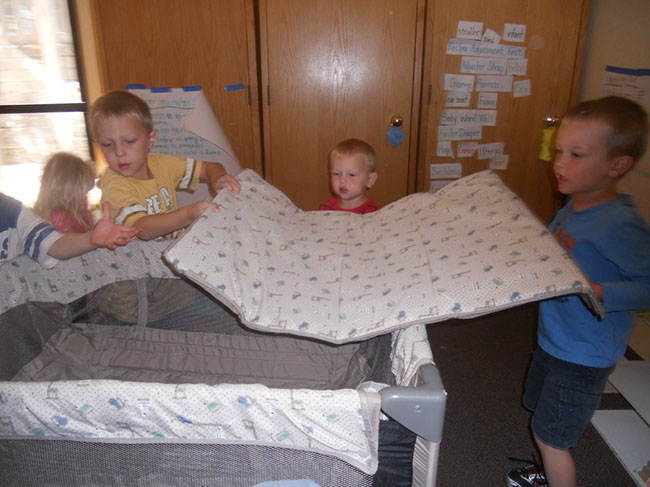
Figure 51. Children cooperated to place the mattress properly.
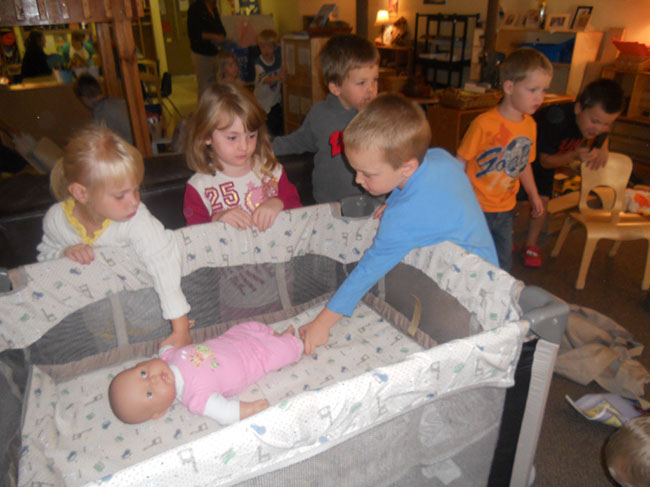
Figure 52. Children placed a doll in the assembled playpen/bassinet.
Phase 3
The children and teachers held a discussion, and the children decided that they would like to share what they had learned about babies with the teachers from the Honeybee class (birth to 2) and the Ladybug class (2-year-olds). They then dictated a list of the most important jobs that would need to be done at the sharing event. Once the list was completed, they asked if I would make them a sign-up sheet, and they each signed up for the role-play that they would like to do for the visitors.

Figure 53. Children signed up to take specific roles during the culminating event.
In the following days, children prepared for the role-plays that they would perform in the culminating event. Children gathered materials to use in their role-play, and each child practiced his or her role. As they practiced, the children coached each other. For example, as one child demonstrated his role-play, other children would offer him reminders or pointers that would improve his performance (Figure 54).
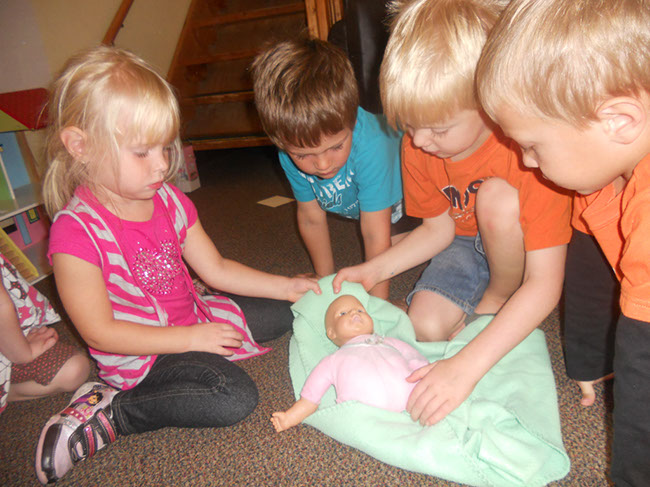
Figure 54. Children coached a peer who was practicing swaddling a baby.
As the class prepared for the culmination event with the Infant and Toddler teachers and children, we began to talk at group meeting about how we wanted the event to look. The children were concerned about things that might go wrong. One child shared that the visiting teachers might not know the names of the children in our class. Another child expressed concern that she might forget her job. A child suggested using small blank stickers to write their names and their jobs, which they could wear during the culminating activity. Another child thought that would be perfect because, “The teachers can read,” adding, “I will read your name but someone can help me read your job if I forget.”
We took the stickers outdoors to our Nature Explore classroom, which we call the Beehive. The children found various flat surfaces to write their names and jobs on their stickers. Many of the children helped others sound out their names and jobs (Figures 55-57).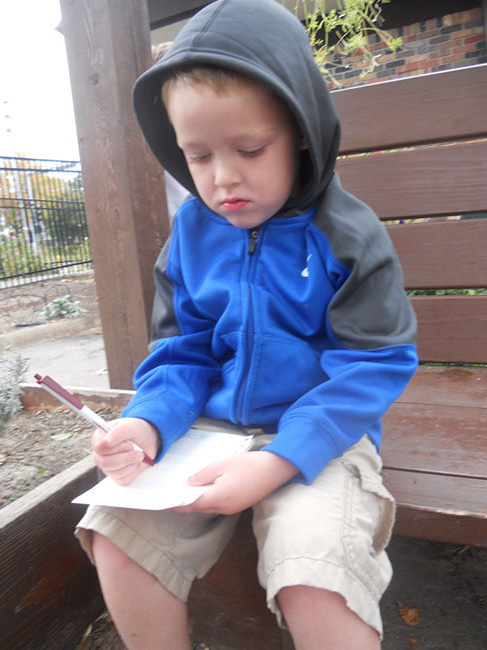
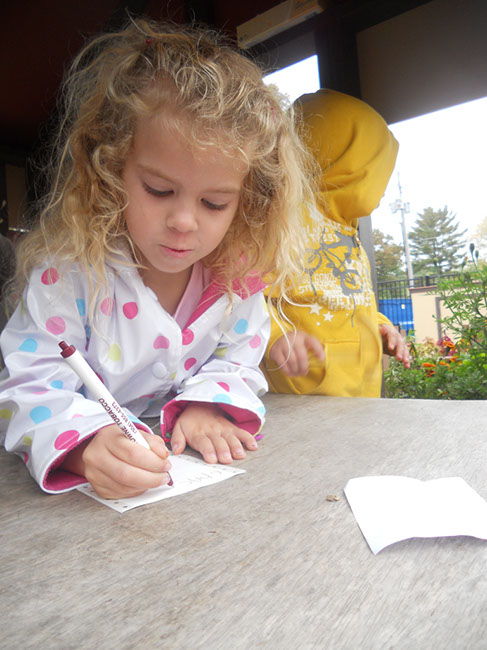
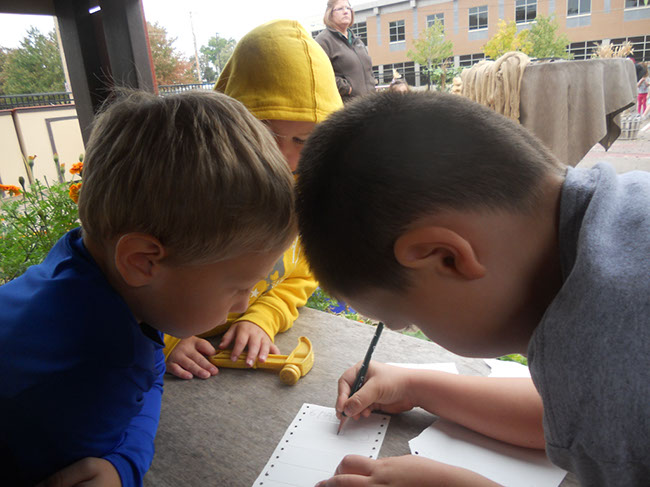
Figures 55-57. Children wrote on their stickers outdoors.
On the day of the culmination, the children prepared by practicing in the early morning and creating rules to ensure the safety of everyone involved. Some of their rules included the following:
- If you want to talk to the teachers say, “Excuse me!”
- If you don’t take turns, then the teachers will not understand us all talking at one time!
- Be patient.
- Answer questions.
- Do not be a bully.
- Tell them about babies until we are done.
When our guests Shalan (infant-toddler teacher) and Lynn (toddler teacher) arrived, the children seated them in the area where we typically hold our large group meeting, at the front. Before they began the presentations, the children agreed to let the 3-year-olds do theirs first, 4-year-olds second, and 5-year-olds last.
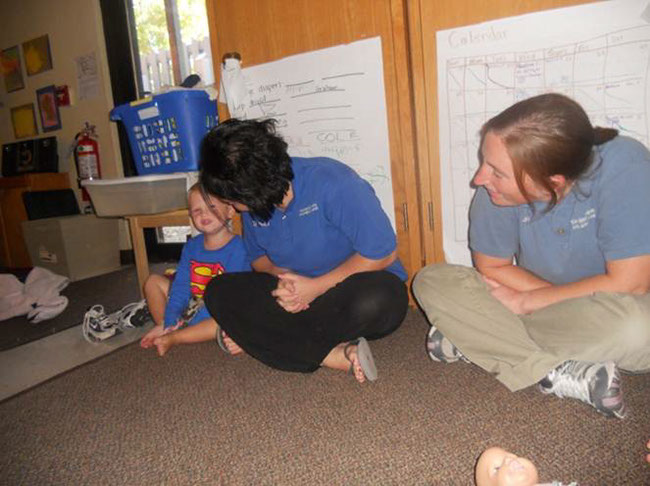
Figure 58. The two visiting teachers listened to children sharing information.
Cameron (4 years) demonstrated how to feed a baby. He held the baby in his arms and fed the baby a bottle. Visiting teacher Lynn asked him what goes in the bottle. “Carrots?” she asked. Cameron laughed, “No! Milk!” Another child added, “Or breast milk.” Ryan, (5 years, 1 month) showed the teachers how to burp the baby two different ways (Figure 59). First he demonstrated patting the baby on his back while holding him over his shoulder. Then he demonstrated holding the baby under the chin and patting his back.
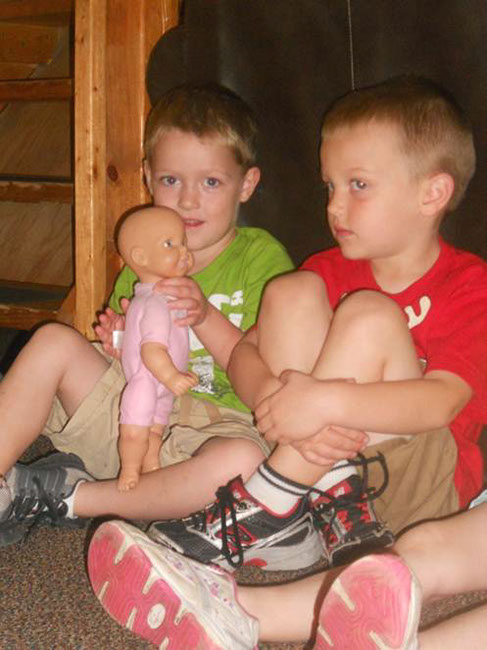
Figure 59. Ryan showed two ways of burping a baby.
Gavin (5 years) showed how to buckle a baby safely in a car seat (Figure 60). Raissa (4 years, 5 months) shared her photos in her Neonatal Intensive Care Unit (NICU) book. She explained the reasons that she had to move into the NICU when she was born, the purposes of the wires that were attached to her, and images of the place where her parents and doctors washed their hands before seeing her, her family holding her, her trip home, and her first bath (Figure 61).

Figure 60. Gavin demonstrated how to buckle a baby into a car seat.
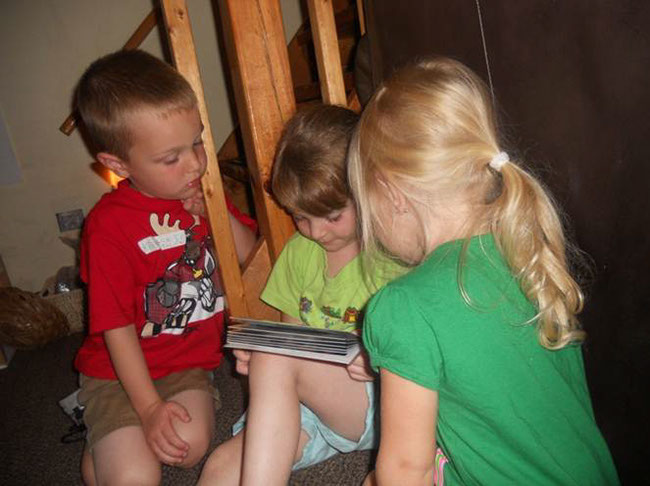
Figure 61. Raissa shared the record of her stay in the NICU.
Before the guests left, the children wanted to show them how skillful they had become at setting up the Pack ‘n Play. They were able to set it up in about 20 minutes, about half of the time it took them when they first tried to assemble it (Figures 62 & 63). They encountered difficulty during the role-play when the sides would not lock into place. A child solved the problem by referring to the directions and instructing me what to do to help them accomplish the task.
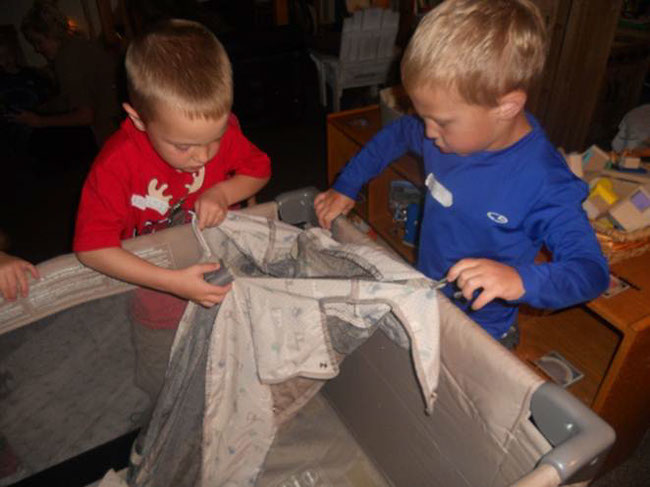
Figure 62. The children worked as a team to assemble the Pack ‘n Play for visitors.

Figure 63. The children put the finishing touches on the assembled Pack ‘n Play.
As a final step in culminating the Baby Project, the children dictated a list of things that they had learned over the course of the project. The list was displayed near the doorway to their classroom so that family members and visitors could see how much they had learned:
- Embryos are babies that just start growing in moms’ bellies. (Gavin; 5 years)
- Fetuses are babies that stay in the mother until it is time to come out. (Bianca; 3 years, 10 months)
- A newborn is a baby that comes out. Babies need to be ready to come out or they are sick. (Lola; 4 years)
- If you are sick or not healthy or born early, you have to go to the NICU. The doctor will know if you have to go. (Raissa; 4 years, 5 months)
- Breast milk only comes from Mommies. (Zoe; 3 years, 1 month)
- Dads can help too, if they put the milk in a bottle. (Gareth; 4 years, 5 months)
- Babies grow a long time. (Glenn; 4 years, 2 months)
- Babies can be breech, but not all babies. I was breech. I was not upside down. Babies are supposed to be upside down to come out. (Zoe; 3 years, 7 months)
- Babies grow in and out of moms’ bellies! They always grow. (Grace; 4 years, 11 months)
- Even if a baby kicks the mom’s belly, they are not ready to come out yet. (Cole; 5 years)
- You have to break up the baby’s food. If you don’t, they could choke. That would be so scary. (Jackson; 4 years, 6 months)
- They sleep in cribs. (Blaine; 3 years, 1 month)
- You have to put them in a car seat for a ride, or they might be in danger! (Ryan; 5 years, 1 month)
Reflection from Andromahi Harrison
With every project, I learn a great deal about what the children are capable of, what worked and did not work, and what I can do to improve my teaching. This project was no different.
For example, instead of our usual topic web, we used the cards to create a list of what the children knew about babies at the beginning of the project. I might use this method again, because when the children wanted to copy words, they were able to remove their cards from the list temporarily and take them to other areas of the classroom where they were engaged in writing activities.
I was amazed on a daily basis at how motivated the children are and what their motivation can help them learn during project work. During the project, throughout any given day, all of the children would participate in the project in some way at different times and in different ways. Some would express information through dramatic play or through pictures. Others would work together to learn about the newest item brought in for study. Each child was part of at least one investigation. Some children participated in more than one. Some spent much of their time just observing, while others took leadership roles in all of the related activities. Typically, the group of children at a given activity ranged from about 6-10, usually closer to 10.
I have found that in general the children retained much of what they learned during the Baby Project. During the new school year, they continued to use the terminology and knowledge they gained, applying it in their interactions with several parents and teachers (including my assistant and me) who were pregnant at that time. They referred back to the books and other resources we used, retelling information and using terminology that they remembered from the project.
This project taught me about myself as a teacher as well. It reminded me to never underestimate the power of a child's brain. I believe that it is important to encourage children in any way possible to find answers to their questions regardless of their ages. I also support children in documenting their own learning by asking questions such as, “How do you think we can let others know what we learned?” or “How can we share what we learned with our friends?”
We find as teachers that during project work the children want to share much of what they have learned with their families. During this project, I was able to continue or create stronger bonds with families as we discussed what their children were learning at home related to the project. On an almost daily basis, family members would tell me about their experiences with their children in relation to the Baby Project. Some families shared photos of their children's first years of life. Other parents offered the class parenting books that they had used with their children for further investigations, and others spent time investigating questions with their children! I made a point of discussing my plans for the project with families so that each family felt comfortable about the way each item would be worked into our curriculum. I was lucky to have fantastic support, and I felt that all of us learned through this process in developmentally appropriate ways. I plan to continue to support the bonds that I made with my staff and families during every project.
During the next project that this class undertook, many of the children who were involved in the Baby Project took leadership roles, which included asking me to add specific components to my lesson plans for the investigation. Overall, this was one of the most successful projects I have ever had.
Author Information
Andromahi Harrison has been teaching at the St. Ambrose University Children's Campus in Davenport, Iowa, for the past 5 years. She attended St. Ambrose University, where she learned about the lab school through her field experience. As a student worker, Andromahi worked in all five classrooms in the center (infant/toddler, toddler, and three preschool rooms). She is now the lead teacher in a preschool room called the Leapfrogs. Andromahi is dedicated to teaching children birth to age 5. She is particularly interested in literacy, relationships, and guidance techniques.
Andromahi Harrison
Lead Preschool Teacher
St. Ambrose University Children's Campus
1301 W. Lombard
Davenport, IA 52801

